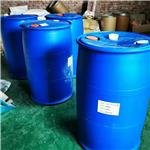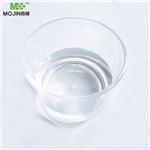4-hydroxy-3-methoxybenzyl alcohol (also known as vanillyl alcohol) is often used as a deodorant component that is active in preventing the formation of body odor. It can also be used as a flavoring agent. Recent studies have also demonstrated that it has certain pharmacological effects. For example, it has been confirmed that it has certain neuro-protective effects through suppressing the oxidative stress and anti-apoptotic activity in toxin-induced dopaminergic MN9D cells, making it a potential candidate for the treatment of neurodegenerative diseases such as Parkinson’s disease.
Vanillyl alcohol is a lignin derived aromatic diol. It has a mild, sweet, balsamic, vanilla-like odor. It has a potential for the production of renewable epoxy thermosets. A bio-based bisphenolic analogue, bisguaiacol, was synthesized via the electrophilic aromatic condensation of vanillyl alcohol and guaiacol. From this, the diglycidyl ether of bisguaiacol was prepared. Further, three single aromatic diglycidyl ethers were synthesized from vanillyl alcohol, gastrodigenin, and hydroquinone.
crystalline white to off-white powder
Used as a flavoring agent. Other possible uses, vanilla, coconut, cream and other dairy nuances, coumarin.
ChEBI: Vanillyl alcohol is a monomethoxybenzene that is 2-methoxyphenol substituted by a hydroxymethyl group at position 4. It has a role as a plant metabolite. It is a member of guaiacols and a member of benzyl alcohols.
Sweet, creamy and milky with a slightly powdery mouthfeel.
Vanillyl alcohol belongs to the phenolic group of compounds which are widely used as oxidants in food products.
reagent type: cross-linking reagent
Odor at 1.0%: sweet creamy, phenolic, vanilla and coconut-like with slight brown and coumarinic nuances.
Vanillyl alcohol is prepared from Vanillin by hydrogenation in
presence of Platinum black.
Brune, I, et al. "Under the influence of the active deodorant ingredient 4-hydroxy-3-methoxybenzyl alcohol, the skin bacterium Corynebacterium jeikeium moderately responds with differential gene expression." Journal of Biotechnology 127.1(2006):21-33.
Hsu, Lun Chung, Z. H. Wen, and K. Y. Lee. "Use of vanillyl alcohol for the treatment of Parkinson's disease." (2009).
Kim, I. S., D. K. Choi, and H. J. Jung. "Neuroprotective effects of vanillyl alcohol in Gastrodia elata Blume through suppression of oxidative stress and anti-apoptotic activity in toxin-induced dopaminergic MN9D cells." Molecules 16.7(2011):5349.



